After cataracts, glaucoma is the second-leading cause of blindness in adults. The term glaucoma refers to a group of related disorders that affect the eye’s optic nerve over time, causing blindness. Glaucoma is caused by high pressure inside the eye, or intraocular pressure. Over time, the increased intraocular pressure gradually damages the optic nerve, resulting in vision loss. The effects of glaucoma happen gradually, so it’s very tough to diagnose until the later stages of the disease. Because of this characteristic of the disease, it’s important to know the common factors associated with higher risk for glaucoma.
Let’s start with a few common symptoms. Gradual loss of peripheral vision in both eyes and tunnel vision are common in patients with primary open-angle glaucoma, while eye pain, blurred vision, nausea, redness around the eye, and halos around lights are common signs and symptoms for patients with acute angle-closure glaucoma. However, do not rely on the detection of signs and symptoms before visiting an optometrist; recall that almost all cases of glaucoma only exhibit noticeable symptoms in the latter stages of the disease. The best method of prevention is regular check ups at your optometrist’s office.
The leading risk factor for all types of glaucoma is age. The incidence of glaucoma drastically increases after the age of sixty. Optometrists recommend scheduling a comprehensive eye exam every 3 years starting at age 40, with the timing changing to once per year beginning at age sixty. Be sure to have your optometrist check the intraocular pressure of each eye to ensure that your eyes are being properly monitored for potential cases of glaucoma. Remember, glaucoma is very tough to spot, but intraocular pressure readings can be very telling about the condition of your eyes and your subsequent risk for glaucoma. Early detection can result in aversion of the disease through a variety of treatments and surgical methods.
A second factor to consider when evaluating your risk for glaucoma is your ethnic background. Optometric research reports that among various ethnic groups, individuals with African-American or Hispanic heritage are the groups with the highest risk for primary open-angle glaucoma. In fact, optometrists recommend that African-American individuals as young as 20 start routine eye exams every 3 years to monitor intraocular pressure. Individuals with Asian descent are reported at being the highest risk group for acute angle-closure glaucoma in older ages. Additionally, if anyone in your family has contracted glaucoma, you are also at a higher risk due to genetic factors.
Lastly, a few other diseases may increase your risk for glaucoma, including: diabetes, heart disease, high blood pressure, or hypothyroidism. If you have other eye conditions like retinal detachment, a tumour in the eye, or have a history of using corticosteroid medications, your risk of contracting glaucoma is also increased.
By scheduling regular check-ups with your optometrist to monitor intraocular pressure, you can greatly reduce your risk of contracting glaucoma. Additionally, lead a healthy, active lifestyle if you have discovered that your intraocular eye pressure is higher than normal in order to naturally reduce it. Above all else, talk to an optometrist about any questions or concerns you have regarding glaucoma. Call Dr. Brian Abrams to book an appointment at (905) 850-2400.


